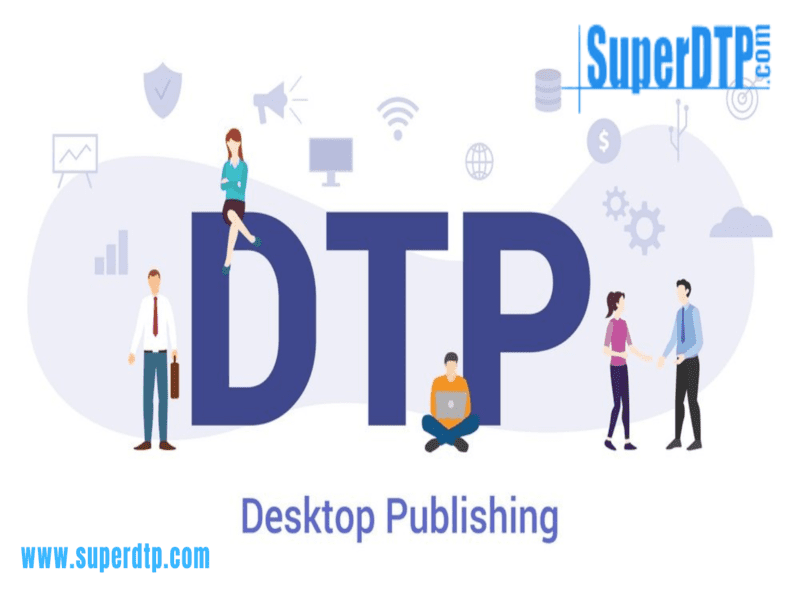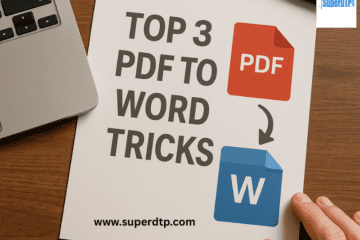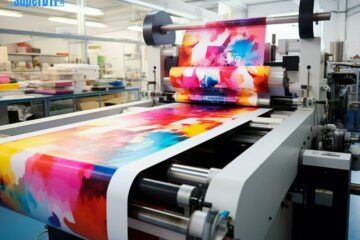Flyers are a versatile and effective way to promote events, products, services, or causes. They can quickly capture attention, convey information, and leave a lasting impression on your target audience. To ensure your flyers stand out and effectively communicate your message, desktop publishing is a powerful tool. In this comprehensive guide, we’ll explore the art of creating eye-catching flyers with desktop publishing, covering design tips and essential tools that will help you craft compelling promotional materials.
Why Flyer Design Matters
Before we dive into the specifics of desktop publishing and design, it’s crucial to understand why flyer design matters. Flyers are often the first point of contact between your audience and your message. A well-designed flyer can:
- Attract Attention: A visually appealing design is more likely to catch the eye and draw people in.
- Convey Information: Flyers should provide essential details about your event, product, or service concisely and clearly.
- Create a Memorable Impression: A memorable design makes your message stick in people’s minds.
- Drive Action: An effective flyer design should motivate readers to take action, whether it’s attending an event, visiting a website, or making a purchase.
With these goals in mind, let’s explore the world of desktop publishing and the design tips and tools you need to create outstanding flyers.
Design Tips for Eye-Catching Flyers
- Know Your Audience: Understanding your target audience is the first step to effective flyer design. Consider their preferences, needs, and what will resonate with them. For example, a flyer for a children’s event will have a vastly different design compared to one for a corporate conference.
- Simplify and Prioritize Information: Keep your message concise and focus on the most critical information. Use headlines, subheadings, and bullet points to make it easier for readers to scan and absorb the content.
- Eye-catching Imagery: Use high-quality images that relate to your message. Whether it’s photos of products, event photos, or eye-catching graphics, visuals are powerful attention-grabbers.
- Color Palette: Choose a cohesive color scheme that reflects your brand or the event’s theme. Consistency in color helps create a strong visual identity.
- Typography Matters: Select readable fonts that match the tone of your message. Use a combination of fonts for headings and body text, but don’t overdo it. Keep fonts consistent across your flyers.
- Whitespace: Don’t overcrowd your design. Give elements room to breathe. Whitespace helps direct attention and makes your design more approachable.
- Hierarchy and Flow: Guide the reader’s eye with a clear hierarchy of elements. Important information should be more prominent, with less critical details taking a secondary role.
- Testimonials and Social Proof: Including positive reviews, testimonials, or social proof can add credibility and encourage trust.
- Mobile Optimization: In today’s digital age, many people may view your flyer on a smartphone. Ensure your design is mobile-friendly and easily readable on smaller screens.
Desktop Publishing Tools for Flyer Design
To implement these design tips effectively, you’ll need the right tools. Here are some desktop publishing software options and design resources:

- Adobe InDesign: A powerful and industry-standard desktop publishing software with extensive design features. It’s perfect for creating flyers from scratch.
- Canva: A user-friendly and web-based design tool with pre-made flyer templates. Canva is great for those without extensive design experience.
- Microsoft Publisher: A desktop publishing tool for Windows users, which provides templates and design features suitable for creating flyers.
- Stock Photo Websites: Access high-quality images from stock photo websites like Shutterstock, Unsplash, and Adobe Stock to enhance your designs.
- Typography Resources: Use font libraries like Google Fonts, Adobe Fonts, or Typekit to find the perfect typeface for your flyer.
- Graphic Design Elements: Websites like GraphicRiver and Creative Market offer design assets like icons, illustrations, and templates to enhance your flyer.
- Printing Services: When it’s time to bring your flyer to life in print, work with a reputable printing service that can ensure high-quality results.
Designing Your Flyer
Now that you have the design tips and tools in your arsenal, let’s walk through the process of designing your flyer using a popular tool, Canva:
- Choose a Template: Begin by selecting a flyer template that aligns with your message. Canva offers a wide variety of options for different purposes.
- Customize Colors and Fonts: Adapt the template to match your brand or event’s color scheme and choose fonts that enhance your message.
- Add Imagery: Insert relevant images, whether they’re photographs or graphics. Ensure that they are of the right caliber and size.
- Layout and Text: Adjust the layout as needed, keeping in mind the design principles discussed earlier. Add your text, headlines, subheadings, and other essential details.
- CTA and Contact Information: Clearly place your call to action and provide contact information if necessary.
- Review and Proofread: Carefully review your design for any errors, and ask others for feedback before finalizing.
- Export and Share: Once satisfied with your flyer, export it in the desired format (usually PDF or high-resolution image) and share it digitally or print it for distribution.
Printing and Distribution
When it’s time to print your flyer, consider the following:
- Paper Quality: Select the right paper stock for your flyer, depending on the design and budget. Glossy paper can make images pop, while matte paper provides a more elegant finish.
- Printing Options: You can choose between digital printing for small quantities or offset printing for larger quantities. Each has benefits and financial considerations of its own.
- Distribution Channels: Think about where your target audience is most likely to see your flyer. Common distribution channels include direct mail, in-person handouts, bulletin boards, and digital distribution via email or social media.
Conclusion
Creating eye-catching flyers with desktop publishing is a creative and engaging process that can significantly impact the success of your promotions. By following the design tips and using the right tools, you can craft flyers that grab attention, convey your message effectively, and leave a lasting impression on your audience. Remember to tailor your design to your target audience and make the most of the available resources to create compelling promotional materials. Whether you’re promoting a local event, showcasing your business, or advocating for a cause, a well-designed flyer is a powerful tool in your marketing arsenal.
Super DTP Ltd is a specialized desktop publishing agency located in Gabrovo Bulgaria, offering book publishing, multilingual DTP, and E-learning localization services to translation agencies and localization companies worldwide! Check our services at www.superdtp.com or contact us at dtp.bulgaria@gmail.com for further details.


